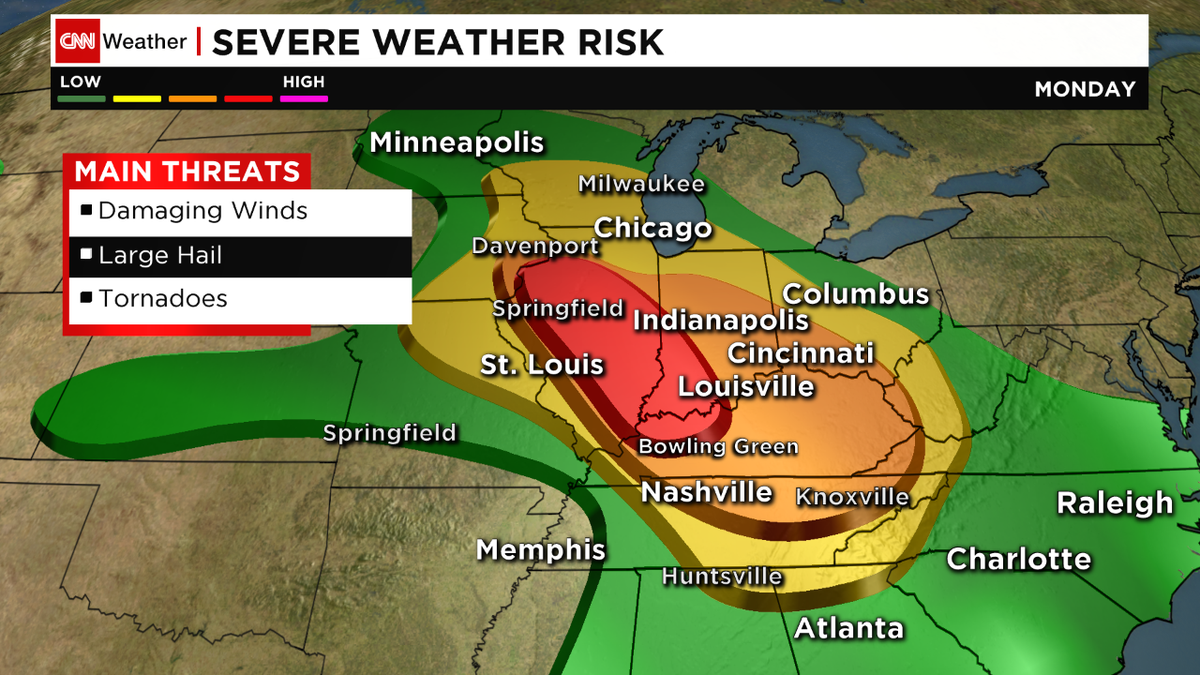Fast-Moving Storms And Damaging Winds: A Comprehensive Guide To Safety

Table of Contents
Understanding the Dangers of Fast-Moving Storms and Damaging Winds
Different types of storms can produce damaging winds, each presenting unique challenges. Thunderstorms, with their powerful downdrafts and gust fronts, can create sudden and intense wind gusts. Tornadoes, characterized by violently rotating columns of air, are notorious for their destructive winds. Hurricanes, large-scale rotating storms, bring sustained high winds over extended periods, causing widespread devastation. The specific hazards associated with high winds are numerous and dangerous.
- Flying Debris: High winds transform everyday objects into dangerous projectiles. Anything from loose shingles and tree branches to entire structures can become deadly missiles.
- Structural Damage: The force of damaging winds can cause significant structural damage to buildings, leading to partial or complete collapses. Homes and businesses can be severely compromised.
- Power Outages: Falling trees and power lines are common during severe weather, leading to widespread power outages, creating further safety concerns.
Bullet Points:
- High winds can uproot trees, causing significant damage and injury. Large, mature trees pose the greatest risk.
- Flying debris, including signs, construction materials, and even vehicles, can become deadly projectiles.
- Power lines may fall, resulting in electrocution hazards. Stay far away from downed lines.
- Structural damage to buildings can lead to collapse, making it crucial to have a solid evacuation plan.
Preparing for Fast-Moving Storms and High Winds
Proactive preparation is key to surviving fast-moving storms and high winds. Develop a comprehensive emergency plan that includes:
- Evacuation Routes: Identify multiple escape routes from your home and workplace, considering potential road closures.
- Meeting Points: Establish designated meeting points for family members in case you are separated during the storm.
- Go-Bag: Prepare an emergency kit containing essential supplies like water, non-perishable food, a first-aid kit, medications, flashlights, batteries, and a portable radio.
Securing your home before a storm hits is also crucial:
- Trim Trees: Trim or remove any dead or weak branches that could fall and cause damage.
- Secure Outdoor Objects: Bring all loose outdoor furniture, decorations, and other objects inside.
- Protect Windows: Consider boarding up windows or using storm shutters to protect them from flying debris.
Bullet Points:
- Sign up for weather alerts and warnings from your local National Weather Service or equivalent.
- Create a communication plan with family and friends, including out-of-state contacts.
- Charge all electronic devices.
- Fill your vehicle's gas tank in case evacuation is necessary.
Staying Safe During a Fast-Moving Storm with Damaging Winds
When a severe weather warning is issued for fast-moving storms or damaging winds, seek shelter immediately. Time is of the essence. The safest places to take shelter are:
- Interior Rooms on the Lowest Level: An interior room on the lowest floor of your home, away from windows and doors, offers the best protection.
- Sturdy Basement: A basement, especially one that's fully enclosed and below ground, is ideal.
- Storm Cellar: If you have a storm cellar, it's the safest option.
If you are caught outside during a storm:
- Find Immediate Shelter: Seek shelter in a sturdy building, a ditch, or a low-lying area.
- Avoid Trees and Power Lines: Stay far away from anything that could fall and cause injury.
Bullet Points:
- Stay away from windows and doors.
- Cover yourself with blankets or mattresses for added protection.
- If you are in a vehicle, pull over to a safe location, away from trees and buildings, and wait for the storm to pass. Do not drive through flooded areas.
- Never attempt to drive through flooded areas; the water may be deeper and faster than it appears.
Post-Storm Safety Procedures
After the storm has passed, exercise caution. Do not approach damaged areas until officials deem it safe.
- Report Damages: Report any damages to your local authorities, insurance company, and utility providers.
- Check for Hazards: Check for gas leaks and electrical hazards before entering your home. If you smell gas, leave immediately and call emergency services.
- Wear Protective Gear: Wear protective gear, including gloves, boots, and eye protection, when inspecting damage.
Bullet Points:
- Wear protective gear when inspecting damage.
- Be aware of downed power lines – they can still be energized and extremely dangerous.
- Avoid areas with debris; it may be unstable and concealing further hazards.
- Check on your neighbors, particularly the elderly or those with disabilities.
Conclusion
Fast-moving storms and damaging winds are serious threats, but with proper preparation and awareness, you can significantly reduce your risk. By following the safety tips outlined in this guide, you can effectively protect yourself and your family during severe weather events. Remember to always stay informed about weather conditions, develop a comprehensive emergency plan, and take immediate action when a warning is issued. Be prepared for fast-moving storms and damaging winds, and stay safe!

Featured Posts
-
 Huuhkajien Kaellman Ja Hoskonen Jaettaevaet Puolalaisseuran
May 20, 2025
Huuhkajien Kaellman Ja Hoskonen Jaettaevaet Puolalaisseuran
May 20, 2025 -
 Wwe Raw Recap Rollins And Breakker Bully Sami Zayn
May 20, 2025
Wwe Raw Recap Rollins And Breakker Bully Sami Zayn
May 20, 2025 -
 Chinas Fury Examining The New Us Missile Launcher Deployment
May 20, 2025
Chinas Fury Examining The New Us Missile Launcher Deployment
May 20, 2025 -
 Decoding Ftv Lives A Hell Of A Run
May 20, 2025
Decoding Ftv Lives A Hell Of A Run
May 20, 2025 -
 15 Avril Nouvelles Restrictions De Circulation Pour Les 2 Et 3 Roues Sur Le Boulevard Fhb Ex Vge
May 20, 2025
15 Avril Nouvelles Restrictions De Circulation Pour Les 2 Et 3 Roues Sur Le Boulevard Fhb Ex Vge
May 20, 2025
